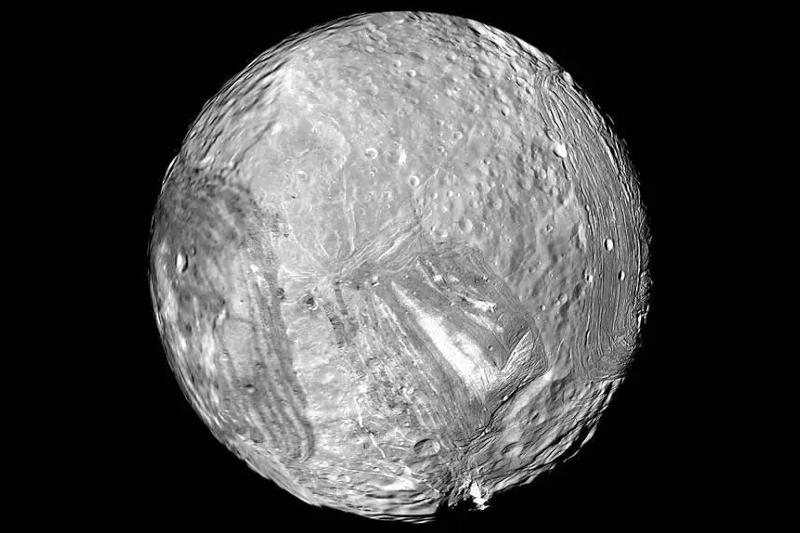A group of American scientists mapped the surface of Uranus’s satellite, Miranda, and also modeled tidal pressure mechanisms on it and concluded that there may be an ocean of liquid water in the depths of this moon.

Image source: nasa.gov
The thickness of the ocean on Miranda, according to scientists, is at least 100 km, and it has existed for the last 100–500 million years. True, it is not located on the surface of the planet, but at a depth of about 30 km. To support their hypothesis, scientists say that if the water on Miranda were completely frozen, certain types of cracks would appear on the surface of the satellite, indicating the expansion of the frozen ocean from the inside. But a study of available images of the moon showed that there are no such cracks.
One of the images of Miranda was taken by the American Voyager 2 spacecraft, which flew past it in 1986. The image showed the moon’s rough surface covered with grooves and craters, which scientists believe were caused by tidal forces and the moon’s internal heating. Based on surface features, the scientists modeled Miranda’s interior—they analyzed stress and shear mechanisms to infer the internal forces that might have shaped its appearance. The deep ocean, in their opinion, could have arisen as a result of the appearance of a thermal pulse when the orbit of the moon changed as a result of its gravitational interaction with other satellites of Uranus.
«Such a deep ocean could have made Miranda very similar to [Saturn’s moon] Enceladus and potentially habitable in the geologically recent past,” the researchers say.